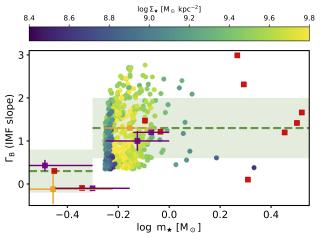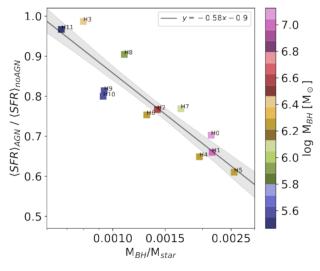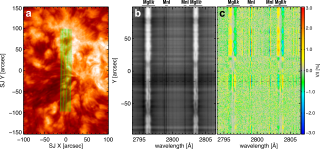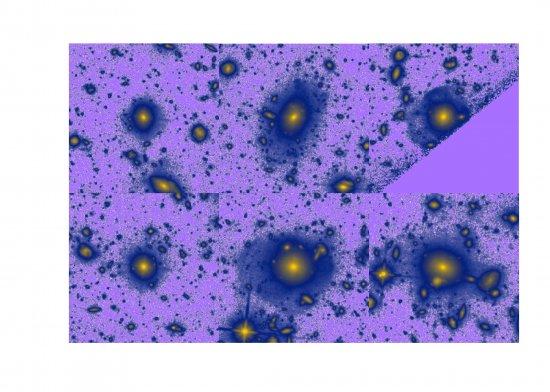It may interest you
-
 The universality of the stellar initial mass function (IMF) is one of the most widespread assumptions in modern Astronomy and yet, it might be flawed. While observations in the Milky Way generally support an IMF that is invariant with respect to the local conditions under which stars form, measurements of massive early-type galaxies systematically point towards a non-universal IMF. To bridge the gap between both sets of evidence, in this work we measured for the first time the low-mass end of the IMF from the integrated spectra of a Milky Way-like galaxy, NGC3351. We found that the slope ofAdvertised on
The universality of the stellar initial mass function (IMF) is one of the most widespread assumptions in modern Astronomy and yet, it might be flawed. While observations in the Milky Way generally support an IMF that is invariant with respect to the local conditions under which stars form, measurements of massive early-type galaxies systematically point towards a non-universal IMF. To bridge the gap between both sets of evidence, in this work we measured for the first time the low-mass end of the IMF from the integrated spectra of a Milky Way-like galaxy, NGC3351. We found that the slope ofAdvertised on -
 Recent observational studies suggest that feedback from active galactic nuclei (AGNs)—the energetic centres powered by supermassive black holes—may play an important role in the formation and evolution of dwarf galaxies, contrary to the standard thought. We investigated this using two sets of 12 cosmological magnetohydrodynamic simulations of the formation of dwarf galaxies: one set using a version of the AURIGA galaxy formation physics model including AGN feedback and a parallel set with AGN feedback turned off. Our results reveal that AGNs can suppress the star formation (SF) of dwarfAdvertised on
Recent observational studies suggest that feedback from active galactic nuclei (AGNs)—the energetic centres powered by supermassive black holes—may play an important role in the formation and evolution of dwarf galaxies, contrary to the standard thought. We investigated this using two sets of 12 cosmological magnetohydrodynamic simulations of the formation of dwarf galaxies: one set using a version of the AURIGA galaxy formation physics model including AGN feedback and a parallel set with AGN feedback turned off. Our results reveal that AGNs can suppress the star formation (SF) of dwarfAdvertised on -
 The magnetic field in the solar chromosphere plays a key role in the heating of the outer solar atmosphere and in the build-up and sudden release of energy in solar flares. However, uncovering the magnetic field vector in the solar chromosphere is a difficult task because the magnetic field leaves its fingerprints in the very faint polarization of the light, which is far from easy to measure and interpret. We analyse the spectropolarimetric observations obtained with the Chromospheric Layer Spectropolarimeter on board a sounding rocket. This suborbital space experiment observed the nearAdvertised on
The magnetic field in the solar chromosphere plays a key role in the heating of the outer solar atmosphere and in the build-up and sudden release of energy in solar flares. However, uncovering the magnetic field vector in the solar chromosphere is a difficult task because the magnetic field leaves its fingerprints in the very faint polarization of the light, which is far from easy to measure and interpret. We analyse the spectropolarimetric observations obtained with the Chromospheric Layer Spectropolarimeter on board a sounding rocket. This suborbital space experiment observed the nearAdvertised on
